Tips for optimizing the effectiveness of your CCTV system
Do you know what a CCTV system is and how it can help protect your assets, your family or your business? The CCTV system, or closed circuit television, is a set of cameras, recorders, monitors and cables that capture and transmit images from a given location for surveillance, security or control purposes.
The CCTV system can be used in different environments, such as homes, businesses, industries, public agencies, among others. It can be used to prevent, detect or record crimes, accidents, break-ins, theft, vandalism, among other events. It can also be used to monitor employee performance, customer flow, quality of products or services, among other aspects.
But did you know that to get the most out of your CCTV system, you need to optimize its effectiveness? This means that you need to choose, install, maintain, record, store, monitor and access images appropriately, according to your objective, your environment, your budget and your available technology.
In this article, we will present some tips to optimize the effectiveness of your CCTV system. We will explain what you should do to ensure the best quality, coverage, security and availability of the images captured by your CCTV system. This way, you can have more peace of mind, confidence and satisfaction with your CCTV system. Let's go?
Tip 1: Choose the right type of camera for each environment
The first tip for optimizing the effectiveness of your CCTV system is to choose the appropriate type of camera for each environment. There are several types of CCTV cameras, each with its own characteristics, advantages and disadvantages. Therefore, you must take into account some factors when choosing the type of camera, such as:
- The Purpose: What is the purpose of your CCTV system? Do you want to prevent, detect or record an event? Do you want to identify people, vehicles or objects? Do you want to monitor the performance, flow or quality of something?
- The location: where will you install the cameras? Is it an indoor or outdoor environment? Is it a broad or restricted environment? Is it a light or dark environment? Is it an environment with a lot or little movement?
- Lighting: what is the level of lighting in the environment? Is it natural or artificial? Is it constant or variable? Is it enough or insufficient?
- The resolution: what is the quality of the images you want to obtain? Do you want images with more or less detail? Do you want images that can be enlarged or edited without loss of quality?
- The angle: what field of view do you want to cover? Do you want images with more or less scope? Do you want images that can be adjusted or fixed?
Depending on these factors, you can choose from the following types of CCTV cameras:
- Analog cameras: these are the simplest and cheapest cameras, which use an electrical signal to transmit images. They have low resolution, quality and range, but are easy to install and compatible with most systems. They are recommended for environments that do not require a lot of sharpness or detail in the images, such as parking lots, corridors or outdoor areas.
- Digital cameras: these are cameras that use a digital signal to transmit images. They have high resolution, quality and range, but are more expensive and complex to install. They allow the use of features such as zoom, focus, motion detection, facial recognition, among others. They are recommended for environments that require more clarity or detail in images, such as stores, banks or indoor areas.
- IP cameras: these are cameras that use the internet to transmit images. They have the same advantages as digital cameras, but also allow remote access, cloud recording and integration with other systems. They are more flexible, mobile and intelligent, but they depend on a stable and secure internet network. They are recommended for environments that require more flexibility, mobility and intelligence, such as homes, offices or public areas.
- Infrared cameras: these are cameras that use infrared radiation to capture images in environments with little or no lighting. They have the ability to see in the dark, but they are of lower quality than normal cameras. They are resistant to adverse weather conditions such as rain, snow or dust. They are recommended for environments that require nighttime monitoring, such as warehouses, warehouses or rural areas.
- Thermal cameras: these are cameras that use thermal radiation to capture images in environments with fog, smoke or dust. They have the ability to detect the heat of objects, but they cannot distinguish colors or shapes. They are useful for identifying anomalies, leaks, fires, among others. They are recommended for environments that require monitoring in adverse conditions, such as ports, airports or industrial areas.
- Hidden cameras: these are cameras that are disguised or camouflaged in common objects, such as watches, pens or glasses. They are discreet and imperceptible and may go unnoticed by those observed. They allow secret monitoring, without the consent or knowledge of those observed. They have limited quality and reduced autonomy. They may be illegal or unethical, depending on the purpose or location of the monitoring. They are recommended for environments that require secret monitoring, such as hotels, meeting rooms or private areas.
These are some of the types of CCTV cameras you can choose for your system. Remember to evaluate the characteristics, advantages and disadvantages of each type, and compare the options on the market. This way, you can choose the right type of camera for each environment and obtain the best images possible.
Tip 2: Position cameras strategically
The second tip for optimizing the effectiveness of your CCTV system is to position the cameras strategically. This means that you must place the cameras to cover areas of interest and avoid blind spots. This way, you will be able to have a complete and clear view of what is happening in your environment.
To position cameras strategically, you must take into account some factors, such as:
- The height: what is the ideal height to install the cameras? You must consider the distance between the camera and the object or person you want to observe, and the camera's viewing angle. If the camera is set too high, you may lose detail or get a distorted image. If the camera is too low, you may have an obstructed image or make it easier to tamper with the camera.
- The distance: what is the ideal distance between the cameras? You must consider the range and resolution of the camera, and the size and shape of the room. If the cameras are too far apart, you may have areas with no coverage or poor image quality. If the cameras are too close together, you may have areas that overlap or contain too much information.
- The direction: what is the ideal direction to point the cameras? You must consider the direction and speed of movement of the objects or people you want to observe, and the source of lighting in the environment. If cameras are pointed in the wrong direction, you may miss important events or have an unfocused or reflective image.
- The tilt: what is the ideal tilt to adjust the cameras? You should consider the level and type of view you want to obtain, and the shape and position of the camera. If the cameras are tilted up or down, you can have an image with more sky or floor, or more wall or ceiling. If the cameras are tilted to the left or right, you may have a more lateral or diagonal image.
Depending on these factors, you can position cameras to cover the following areas of interest:
- Entrances and exits: these are the areas where people or vehicles that frequent your environment enter and exit. You should position cameras to capture visitors' faces or license plates, and record the time and direction of entry or exit. You can use digital or IP cameras, with high resolution and facial recognition, and point them forward or downward, depending on the height of the door or gate.
- Corridors and stairs: these are the areas where people or vehicles move through your environment. You must position the cameras to monitor the flow and behavior of visitors, and to detect suspicious or abnormal situations. You can use analog or digital cameras, with medium resolution and motion detection, and point them forward or to the side, depending on the width of the corridor or staircase.
- Rooms and offices: these are the areas where the main activities of your environment take place, such as meetings, negotiations, transactions, productions, among others. You must position cameras to monitor the performance and quality of employees, customers, products or services, and to record evidence or proof of relevant events. You can use digital or IP cameras, with high resolution and zoom, and point them in the center or in the corners, depending on the size and shape of the room or office.
- Warehouses and stocks: these are the areas where goods or materials from your environment are stored, such as products, equipment, tools, among others. You must position cameras to protect your property and prevent theft, loss or damage. You can use infrared or thermal cameras, with low resolution and night vision, and point them up or down, depending on the height and arrangement of the items.
- External areas: these are areas that are outside your environment, such as gardens, patios, parking lots, among others. You must position the cameras to expand your view and prevent intrusions, vandalism or accidents. You can use analog or infrared cameras, with medium resolution and weather resistance, and point them at the horizon or the ground, depending on the distance and landscape.
These are some of the areas of interest that you can cover with your CCTV system. Remember to position cameras strategically, taking into account height, distance, direction and inclination. This way, you will be able to have a complete and clear view of what is happening in your environment.
Tip 3: Keep cameras clean and protected
The third tip to optimize the effectiveness of your CCTV system is to keep the cameras clean and protected. This means that you must take care of the cameras in order to prevent external agents, such as dust, dirt, humidity, insects, animals, vandalism, among others, from damaging the quality of the images or the functioning of the system.
To keep cameras clean and protected, you must take some factors into account, such as:
- Frequency: How often should you clean and protect cameras? You must consider the type and location of cameras, and the level of exposure to external agents. If the cameras are in dirtier or more dangerous environments, you should clean and protect the cameras more frequently. If the cameras are in cleaner or safer environments, you can clean and protect the cameras less frequently.
- The material: what is the most suitable material for cleaning and protecting cameras? You must consider the material and shape of the cameras, and the type of external agents you want to avoid or remove. If the cameras are metal or plastic, you can use a soft, dry cloth to clean the cameras. If the cameras are made of glass or acrylic, you can use a soft, damp cloth to clean the cameras. If the cameras are made of wood or fabric, you can use a vacuum cleaner to clean the cameras. If cameras are exposed to dust, dirt, moisture, insects, animals, vandalism, etc., you can use a cover, case, grille, or film to protect the cameras.
- The Method: What is the most effective method for cleaning and protecting cameras? You must consider the degree and nature of the dirt or damage you want to avoid or remove, and the time and cost involved. If the cameras are slightly dirty or damaged, you can clean and protect the cameras manually, carefully and gently. If the cameras are very dirty or damaged, you can clean and protect the cameras mechanically with suitable equipment and tools. If the cameras are irreparably dirty or damaged, you can clean and protect the cameras by replacing them with new ones.
Depending on these factors, you can keep cameras clean and protected to ensure the best quality, durability and security of your CCTV system. Remember to keep cameras clean and protected regularly, using the most appropriate material and method for each case. This way, you will be able to avoid or remove external agents that could affect your cameras.
Tip 4: Use a suitable recording and storage system
The fourth tip to optimize the effectiveness of your CCTV system is to use an appropriate recording and storage system. This means that you must choose a device or service that guarantees the security, integrity and availability of the images captured by your CCTV system.
To use a suitable recording and storage system, you must take into account some factors, such as:
- The capacity: how many images do you want to record and store? You must consider the number and type of cameras, the resolution and quality of the images, the recording time and frequency, among others. If you want to record and store a lot of footage, you should choose a system with high storage capacity. If you want to record and store few images, you can choose a system with low storage capacity.
- The speed: how quickly do you want to record and access the images? You must consider the flow and importance of images, urgency and need for access, among others. If you want to record and access footage quickly, you should choose a system with high recording and access speed. If you want to record and access footage slowly, you can choose a system with low recording and access speed.
- Quality: what level of quality do you want to maintain in the images? You should consider the purpose and usefulness of the images, the sharpness and detail of the images, among others. If you want to maintain a high level of image quality, you must choose a system that does not compress or degrade images. If you want to maintain a low level of image quality, you can choose a system that compresses or degrades images.
- The location: Where do you want to install or access the recording and storage system? You must consider the space and security of the location, proximity and connectivity to cameras, among others. If you want to install or access the system in the same location as the cameras, you must choose a local system, such as a digital recorder or a hard drive. If you want to install or access the system in a different location than the cameras, you must choose a remote system, such as a server or cloud.
Depending on these factors, you may use one of the following recording and storage systems:
- Digital recorder: is a device that records and stores images from cameras on an internal or external hard drive. It has high capacity, speed and storage quality, but requires physical space and a power source to operate. It allows local or remote access, depending on the internet connection. It is suitable for CCTV systems with many cameras, high resolution and quality images, and the need for quick and secure access.
- Server: is a computer that records and stores images from cameras on an internal or external hard drive. It has average capacity, speed and storage quality, but requires physical space and a power source to operate. It allows remote access via the internet. It is suitable for CCTV systems with few cameras, medium resolution and quality images, and the need for flexible and shared access.
- Cloud: is an online service that records and stores camera images on a remote server. It has low capacity, speed and storage quality, but does not require physical space or a power source to operate. It allows remote access via the internet. It is suitable for CCTV systems with few cameras, low resolution and quality images, and the need for mobile and economical access.
These are some of the recording and storage systems that you can use for your CCTV system. Remember to choose the system that guarantees the security, integrity and availability of the images captured by your CCTV system, taking into account capacity, speed, quality and location. This way, you will be able to record and access the images properly.
Tip 5: Monitor and access images efficiently
The fifth and final tip for optimizing the effectiveness of your CCTV system is to monitor and access images efficiently. This means that you must view and analyze the images in order to get the most out of your CCTV system.
To monitor and access images efficiently, you must take into account some factors, such as:
- Frequency: How often should you monitor and access images? You must consider the purpose and importance of your CCTV system, and the urgency and need for viewing. If your CCTV system is to prevent or detect critical events, you should monitor and access images more frequently. If your CCTV system is for recording or analyzing routine events, you can monitor and access footage less frequently.
- The method: What is the most convenient method for monitoring and accessing images? You should consider the type and location of your recording and storage system, and its proximity and connectivity to your viewing device. If your recording and storage system is local, you can monitor and access footage through a monitor or TV. If your recording and storage system is remote, you can monitor and access footage from a computer or mobile device.
- The device: what is the most suitable device for monitoring and accessing images? You must consider the size and quality of the screen, the processing capacity and speed, the autonomy and security of the device. If you want to monitor and access images with more comfort and quality, you can use a device with a large, high-resolution screen, a powerful processor and a durable battery. If you want to monitor and access images with more mobility and convenience, you can use a device with a small, low-resolution screen, a simple processor and a rechargeable battery.
Depending on these factors, you can monitor and access images to get the most out of your CCTV system. Remember to monitor and access images with the frequency, method and device that best suits you. This way, you will be able to view and analyze the images efficiently.
Conclusion
In this article, we present some tips to optimize the effectiveness of your CCTV system. We have seen that to get the most out of your CCTV system, you need to choose, install, maintain, record, store, monitor and access images appropriately, according to your objective, your environment, your budget and the its available technology.
We hope this article has been useful for you to better understand tips for optimizing the effectiveness of your CCTV system. If you want to know more about this subject, or if you need a personalized solution for your case, we have a special offer for you. Just click on the link below and you will have access to exclusive content and an unmissable discount. Do not miss this opportunity!
Faqs
Here are some unique questions and answers on the topic of the article:
- What is a CCTV system?
A CCTV system, or closed circuit television, is a set of cameras, recorders, monitors and cables that capture and transmit images from a given location for surveillance, security or control purposes.
- What are the advantages of having a CCTV system?
The advantages of having a CCTV system are:
-
Prevent, detect or record crimes, accidents, break-ins, theft, vandalism, among other events;
-
Monitor the performance, flow, quality, efficiency or sustainability of employees, customers, products or services;
-
Protect assets, family or business;
-
Obtain evidence or proof of relevant events;
-
Have more peace of mind, confidence and satisfaction.
-
What are the types of CCTV cameras?
The types of CCTV cameras are:
-
Analog cameras: these are the simplest and cheapest cameras, which use an electrical signal to transmit images. They have low resolution, quality and range, but are easy to install and compatible with most systems.
-
Digital cameras: these are cameras that use a digital signal to transmit images. They have high resolution, quality and range, but are more expensive and complex to install. They allow the use of features such as zoom, focus, motion detection, facial recognition, among others.
-
IP cameras: these are cameras that use the internet to transmit images. They have the same advantages as digital cameras, but also allow remote access, cloud recording and integration with other systems. They are more flexible, mobile and intelligent, but they depend on a stable and secure internet network.
-
Infrared cameras: these are cameras that use infrared radiation to capture images in environments with little or no lighting. They have the ability to see in the dark, but they are of lower quality than normal cameras. They are resistant to adverse weather conditions such as rain, snow or dust.
-
Thermal cameras: these are cameras that use thermal radiation to capture images in environments with fog, smoke or dust. They have the ability to detect the heat of objects, but they cannot distinguish colors or shapes. They are useful for identifying anomalies, leaks, fires, among others.
-
Hidden cameras: these are cameras that are disguised or camouflaged in common objects, such as watches, pens or glasses. They are discreet and imperceptible and may go unnoticed by those observed. They allow secret monitoring, without the consent or knowledge of those observed. They have limited quality and reduced autonomy. They may be illegal or unethical, depending on the purpose or location of the monitoring.
-
How to position cameras strategically?
To position the cameras strategically, it is necessary to take into account some factors, such as the height, distance, direction and inclination of the cameras, and cover the areas of interest and avoid blind spots. Areas of interest may be entrances and exits, corridors and stairs, rooms and offices, warehouses and stocks, external areas, among others.
- How to keep cameras clean and protected?
To keep cameras clean and protected, it is necessary to take into account some factors, such as the frequency, material and method of cleaning and protecting the cameras, and avoid or remove external agents, such as dust, dirt, humidity, insects, animals , vandalism, among others, that may harm the quality of the images or the functioning of the system.
- How to choose the right recording and storage system?
To choose the appropriate recording and storage system, it is necessary to take into account some factors, such as the capacity, speed, quality and location of the system, and ensure the security, integrity and availability of the images. The system can be a digital recorder, a server or a cloud, depending on the user's needs and preferences.
- How to monitor and access images efficiently?
To monitor and access images efficiently, it is necessary to take into account some factors, such as the frequency, method and device for monitoring and accessing images, and get the most out of the CCTV system. Monitoring and accessing images can be done through a monitor, a TV, a computer or a mobile device, depending on the user's needs and preferences.

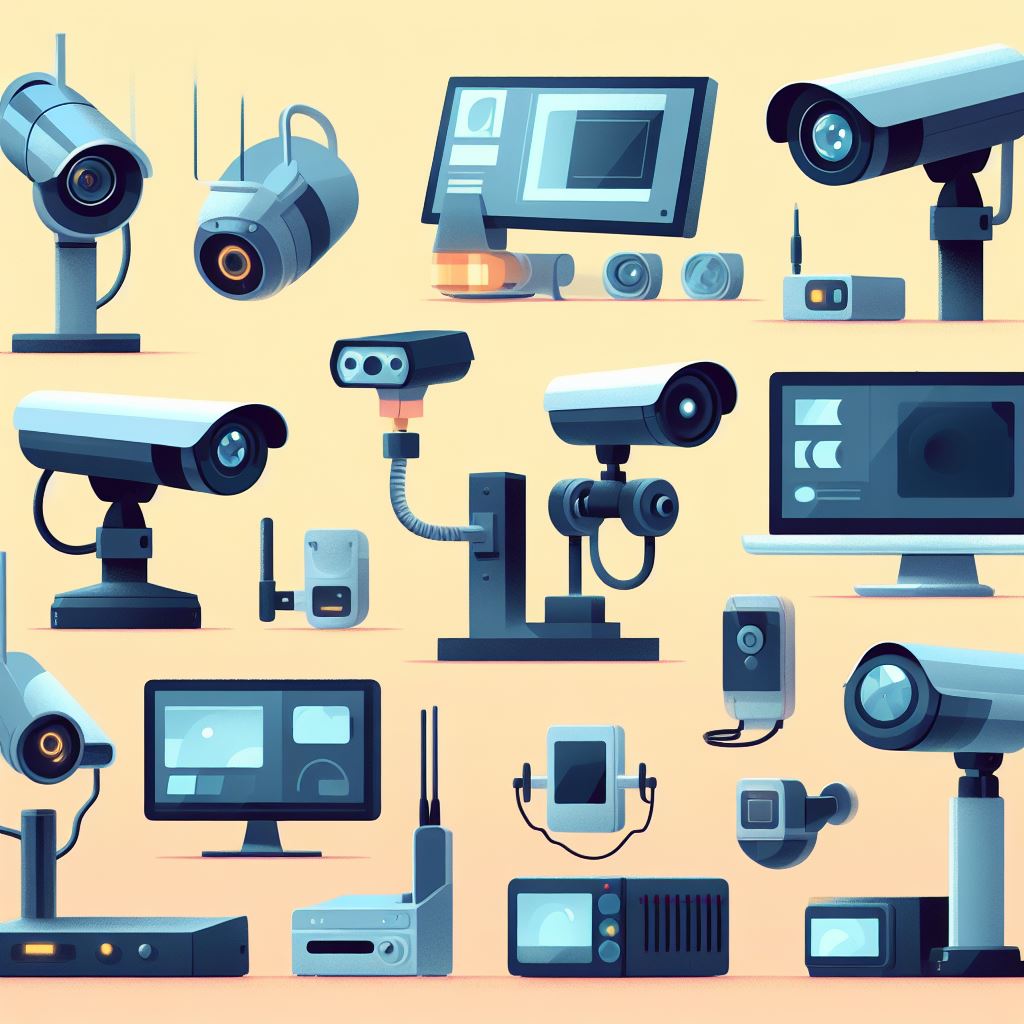
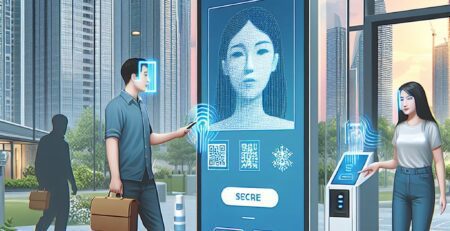
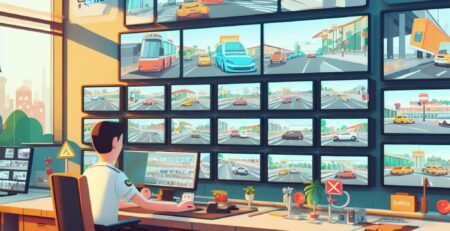
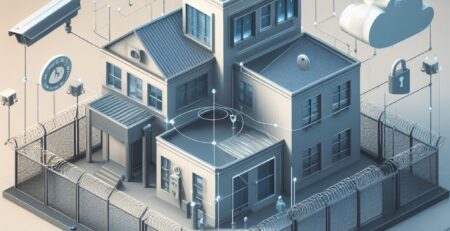
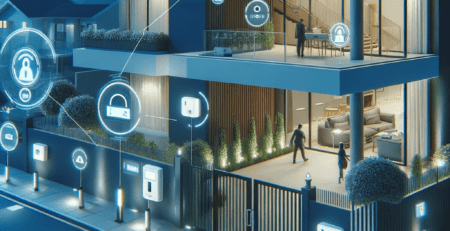
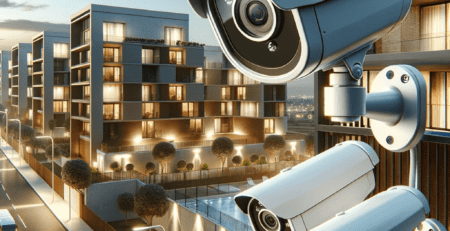
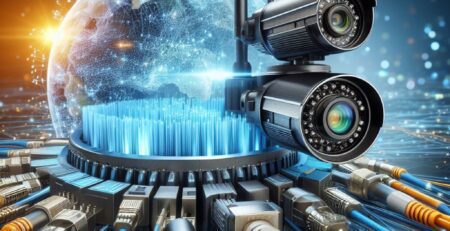
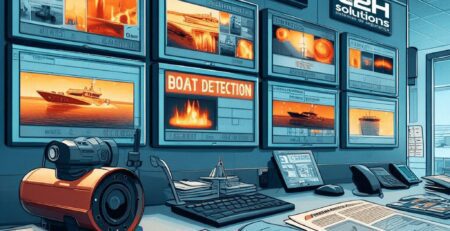


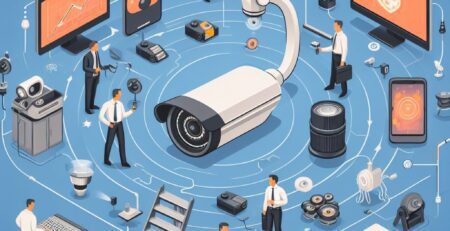
Comments (12)
💡 A otimização do seu sistema de CFTV não apenas melhora a segurança, mas também proporciona uma gestão mais eficiente dos dados coletados. Invista em tecnologia para garantir a proteção que você e sua empresa merecem!
👉 Quer aprofundar seus conhecimentos sobre #Tecnologia e Segurança? Explore mais conteúdos exclusivos em nosso blog na seção #Tecnologia e Segurança.
🤝 Envie um email para nosso departamento comercial! comercial@c2hsolutions.com.br
💡 Investir na otimização do seu sistema de CFTV é fundamental para garantir a segurança eficaz de seus espaços. Pequenas melhorias podem fazer uma grande diferença na proteção do que realmente importa!
👉 Quer aprofundar seus conhecimentos sobre #Tecnologia e Segurança?
Explore mais conteúdos exclusivos em nosso blog na seção #Tecnologia e Segurança.
🤝 Envie um email para nosso departamento comercial! comercial@c2hsolutions.com.br
💡 A otimização do seu sistema de CFTV vai além das câmeras; é sobre integrar tecnologia e estratégia para garantir segurança eficaz. Invista no futuro da sua proteção!
👉 Quer aprofundar seus conhecimentos sobre #Tecnologia e Segurança? Explore mais conteúdos exclusivos em nosso blog na seção #Tecnologia e Segurança.
🤝 Envie um email para nosso departamento comercial! comercial@c2hsolutions.com.br
💡 A implementação de boas práticas em CFTV não só aumenta a segurança, mas também traz tranquilidade para seu negócio. Invista em tecnologia e veja a diferença na proteção do seu patrimônio!
👉 Quer aprofundar seus conhecimentos sobre #Tecnologia e Segurança? Explore mais conteúdos exclusivos em nosso blog na seção #Tecnologia e Segurança.
🤝 Envie um email para nosso departamento comercial! comercial@c2hsolutions.com.br
💡 Aumentar a eficácia do seu sistema de CFTV é essencial para garantir a segurança! Invista em tecnologias de ponta e mantenha seus equipamentos sempre atualizados. 👉 Quer aprofundar seus conhecimentos sobre #Tecnologia e Segurança? Explore mais conteúdos exclusivos em nosso blog na seção #Tecnologia e Segurança. 🤝 Envie um email para nosso departamento comercial! comercial@c2hsolutions.com.br
💡 Para maximizar a eficácia do seu sistema de CFTV, é essencial considerar a integração de novas tecnologias. Manter-se atualizado pode fazer toda a diferença na segurança!
👉 Quer aprofundar seus conhecimentos sobre #Tecnologia e Segurança? Explore mais conteúdos exclusivos em nosso blog na seção #Tecnologia e Segurança.
🤝 Envie um email para nosso departamento comercial! comercial@c2hsolutions.com.br
💡 A eficácia do seu sistema de CFTV pode ser potencializada com ajustes simples e estratégicos! Pequenas mudanças podem fazer uma grande diferença na sua segurança. 👉 Quer aprofundar seus conhecimentos sobre #Tecnologia e Segurança? Explore mais conteúdos exclusivos em nosso blog na seção #Tecnologia e Segurança. 🤝 Envie um email para nosso departamento comercial! comercial@c2hsolutions.com.br
💡 A otimização do sistema de CFTV não apenas melhora a segurança, mas também aumenta a eficiência na gestão de riscos. Pequenas mudanças podem fazer uma grande diferença!
👉 Quer aprofundar seus conhecimentos sobre #Tecnologia e Segurança? Explore mais conteúdos exclusivos em nosso blog na seção #Tecnologia e Segurança.
🤝 Envie um email para nosso departamento comercial! comercial@c2hsolutions.com.br
💡 A eficácia do seu sistema de CFTV pode ser significativamente aumentada com algumas práticas simples, como a correta instalação e manutenção. Invista na segurança da sua propriedade e veja a diferença!
👉 Quer aprofundar seus conhecimentos sobre #Tecnologia e Segurança? Explore mais conteúdos exclusivos em nosso blog na seção #Tecnologia e Segurança.
🤝 Envie um email para nosso departamento comercial! comercial@c2hsolutions.com.br
💡 A otimização do seu sistema de CFTV não só melhora a segurança, mas também traz mais eficiência ao seu negócio. Pequenas mudanças podem fazer uma grande diferença na vigilância!
👉 Quer aprofundar seus conhecimentos sobre #Tecnologia e Segurança? Explore mais conteúdos exclusivos em nosso blog na seção #Tecnologia e Segurança.
🤝 Envie um email para nosso departamento comercial! comercial@c2hsolutions.com.br
#Tecnologia e SegurançaDicas para otimizar a eficácia do seu sistema de CFTV#Tecnologia e SegurançaSegurança com Inovação e Confiabilidade – C2H Solutions
#Tecnologia e SegurançaDicas para otimizar a eficácia do seu sistema de CFTV#Tecnologia e SegurançaSegurança com Inovação e Confiabilidade – C2H Solutions